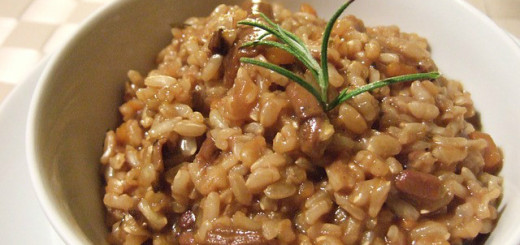Bananas and Diabetes – Can a Diabetic Eat Bananas?
Banana is loved by all as it is very delicious and also healthy for your body. Many people eat it every day. Botanically speaking, banana is a berry. Bananas used for cooking are called plantains in some parts of the world. Banana is elongated and curved and the soft flesh is rich in starch. It is covered with a rind that can be yellow, brownish red or green in colour. This fruit is grown in over 135 countries across the world. It is also cultivated for its fibre, banana beer and banana wine. Here is not much difference between bananas and plantains. Plantains are firmer and starchier than the bananas. Banana can improve the taste of any dish you add it to. It can also help in preventing a number of diseases. But is it good for people suffering from diabetes?
Diabetes and Bananas – What’s the Connection
Why you should eat bananas?
Bananas are one of the healthiest and most potent of the fruits you can have. But the question is whether it can be of any help for those suffering from diabetes.
Let us see what diabetes is. It is a condition in which your body finds it hard to efficiently use the insulin it produces. This gradually leads to the accumulation of glucose in your blood, leading to high blood sugar.
An average banana contains about 30 gm of carbohydrates. Most of these come from the sugars. So, the larger the banana, the more will be the sugar content in it. So, can a diabetic person consume bananas?
So Can Diabetics Eat Bananas?
A small banana contains 8% of the RDA of potassium. It also contains 2 gm of fibre and 12% of the Vitamin C that you need per day. One more thing to keep in mind is that banana is a medium glycemic index food. So, it does not cause blood sugar spikes as much as other sweet foods you consume. What you have to do is to have bananas along with foods that are low in glycemic index or foods that contain little or no carbohydrates. Such foods include nuts, non-starchy vegetables, beans, eggs, fish and meat.
If you are going to have a salad, then you can have bananas with cherries, grapefruit, apples etc. these fruits have low glycemic index. You can also include some protein and fat with each meal. These help in the levels of blood glucose under control. Basically it is the portion that matters and not the serving size. Although bananas are not high in glycemic index, you should take care to have it in limited amounts. You can also test your blood sugar two hours after eating bananas. This will help you to find out what serving size will work the best.
According to studies made, diabetic patients can have bananas regularly and it will not cause any harm. They can have 250 gm of bananas per day. It is important that diabetics consume fruits that are low in fructose. Banana is one such fruit. So, you can say that banana is safe for diabetics. But is it beneficial for them? Does consuming bananas help you to manage diabetes effectively?
Benefits of Bananas for Diabetic Patients:
Fibre:
Presence of fibre in bananas makes them beneficial for people suffering from diabetes. It can slow down digestion ad the absorption of carbohydrates. This way the diabetic condition is improved.
According to studies, dietary fibre can improve the insulin sensitivity and modulate the secretion of certain stomach hormones, both of which are good for treating diabetes.
The resistant starch:
In some ways banana can be of use for managing diabetes. The first is its glycemic index, which is moderate to low. This makes banana one of the useful fruits to manage diabetes.
Banana is also rich in resistant starch. This is stanch that cannot be broken in the small intestine. It passes to the large intestine. According to studies made, resistant starch helps in improving the status in people suffering from type 2 diabetes.
Another study shows that resistant starch ca improve insulin sensitivity. It also helps in managing blood sugar spikes that take place with meal consumption. All these are very beneficial for those suffering from diabetes or are at a risk of suffering from this disease.
Yet another study states that resistant starch is good for treating chronic illnesses, diabetes being one of them. It is the unripe bananas that have higher amounts of resistant starch in it. So, you can include unripe bananas in your regular diet to get the maximum benefits.
A Taiwanese study says that foods with lower glycemic index are rich in fibre and resistant starch. Both these are beneficial for the diabetics. Even the peel of banana has anti-diabetic properties.
Vitamin B6:
Bananas are rich sources of Vitamin B6. Deficiency of this vitamin can lead to diabetic neuropathy, a severe condition associated with the nervous system.
A Japanese study shows that diabetic patients need to take in Vitamin B6 as this disease can cause a deficiency in this vitamin. Another study says that Vitamin B6 can help prevent diabetes in depression.
How to eat a banana properly in your diet?
- You can have ripe or unripe bananas, but not overripe bananas.
- You can slice bananas and have it with a bowl of oatmeal and nuts.
- Be careful about the portion size. You can have a smaller banana so that your sugar intake is lower.
- You may also have a little bit of the fruit several times a day. This way you can keep your blood sugar stable.
- You can eat bananas with other foods. Have it with nuts or full-fat yogurt. This helps in slowing down the digestion process and the absorption of sugar.
- If you want to have dessert, sprinkle cinnamon on sliced banana and have it. This can regulate insulin response as cinnamon is rich in antioxidants. This way your blood sugar remains stable.
- If you have bananas with a sugary dessert, you can compensate it by reducing carbs in your dinner.




